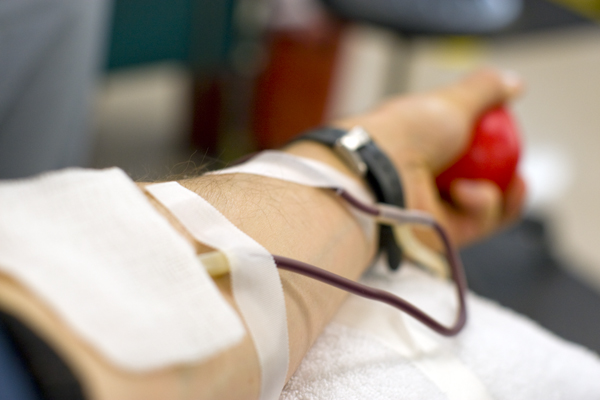Genetic Disorders
A genetic disorder is a disease that is caused by an abnormality in an individual's DNA. Abnormalities can range from a small mutation in a single gene to the addition or subtraction of an entire chromosome or set of chromosones. Based on whether or not the gene is recessive or dominant decides on if the offspring will inherit the genetic disorder from their parents. A person may carry a genetic disorder without knowing it (if it is recessive).
A dominant gene disorder can be caused by a single abnormal gene from a parent, and even though one member of the gene pair is normal , the abnormal gene overrules. A recessive genetic disorder can occur when both members of the gene pair (one from both parents) are abnormal. Everyone carries some abnormal genes, but in most people no defect appears. It is because the abnormal gene is overruled by a normal gene. A person who has one recessive abnormal gene of a particular disorder is considered a carrier.
Haemochromatosis
Haemochromatosis is a genetic disorder, causing the body to absorb an excessive amount of iron from the diet which is then deposited in various organs, mainly the liver, but also the pancreas, the heart, endocrine glands and joints.
The history of the disorder was that it was believed to be so rare that it was hardly ever considered to be a diagnosis. Recent survey's of people of Northern Europe origin have shown that a prevalence of 1 in 200 people are likely to be at risk to of developing it.
Humans are affected by the overload of iron, and if not treated can be serious. The excess amounts of iron in the organs specifically the liver cause it to be enlarged and damaged, and it can cause other tissue damage.
Typical symptoms include chronic fatigue, weakness, and lethargy, abdominal pain, arthritis, late onset diabetes, liver disorders, cardiomyopathy, etc. Most people with Haemochromatosis will develop at least one or two symptoms but mildly. The most suggestive symptom is when arthritis develops in the first two finger joints.
Treatment is simple and effective, and it consists of regular removal of blood. It is the same procedure as in blood donors. When the blood is removed, the body uses some of the excess stored iron to make new red blood cells. Treatment usually occurs once a week, depending on the severity of the case. This should be continued at this frequency for 2 years, sometimes longer. After the first two years a patient will have to continue with "maintenance therapy" (blood removal) every 3-4 months for the rest of there life. If a patient is unable to have blood removed a chelating agent is available for use which binds with the iron in the bloodstream and enhances its elimination in excretion.
Side effects of treatment are that of the same as having blood donated. Patients may experience drowsiness, nausea, lethargy, etc.
image of a patient of donating blood. treatment for haemochromatosis.

Gene Therapy
Gene therapy is the insertion of genes into an individuals cells and tissues to treat a disease, such as a hereditary disease in which a mutant cell is replaced with a functioning one. It is fairly new, but has been successful in cases. It was originally focused on introducing genes directly into human cells focusing on diseases caused by single-gene defects , but it proved difficult because the problems involved carrying large sections of DNA.
Gene therapy is not used in Haemochromatosis due to the fact that there is a simple treatment already in use that is successful in the majority of cases. Although it is seen as a possibility in the future as the technology advances.

Controversies
The disease is easily diagnosed by blood tests, and treated by phlebotomy (blood letting). Although symptoms develop late, and often iron overload has often already caused damage to the liver and other organs. The controversy is around whether or not their should be population screening, because of the uncertainties surrounding the natural history of untreated disease, the cost of screening programs and the potential hazards of widespread genetic testing.
Bibliography:
http://haemochromatosis.org.au
http://www.haemochromatosis.org.uk
http://www.hse.ie/eng/services/news/Haemochromatosis_Information_Event.html
http://prometheus.med.utah.edu/~bwjones/2008/01/blood-donation/ image
Comments (0)
You don't have permission to comment on this page.